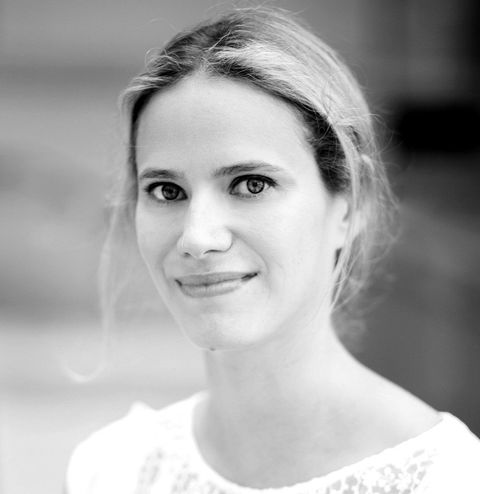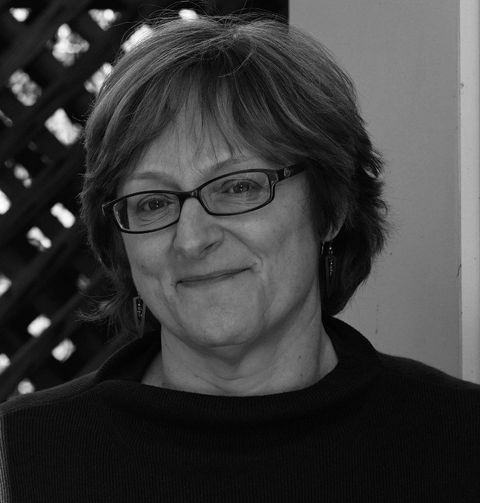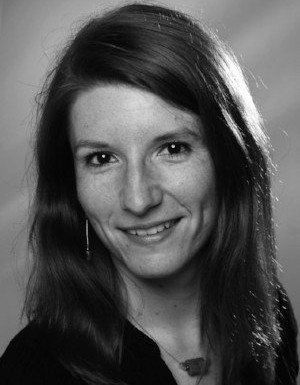Keynote_speakers_SAGE2.0
KEYNOTE SPEAKERS - SAGE 2.0
Prof. Dr. Alexandra Bendixen
Department of Physics, School of Natural Sciences, Chemnitz University of Technology,
Chemnitz, Germany
"Tracing predictability in auditory perception - and facing unpredictability in a scientific career"
Abstract:
My scientific work focuses on auditory predictive processing. The nature of acoustic information transmission involves significant challenges: Several sound sources are typically active in parallel and produce overlapping signals that need to be perceptually disentangled. This complex task is facilitated by predictive processing: The auditory system uses prior information to predict upcoming sounds, thus reducing processing complexity as the predicted signals arrive. I will discuss psychophysical and psychophysiological evidence for the use of such predictive strategies during sound source segregation as well as during speech comprehension.
While being fascinated with predictability as a research topic, I have encountered the typical unpredictabilities of a scientific career. Throughout my talk, I will describe how I have tackled this challenge and how crossing boundaries between disciplines continues to be an important source of scientific inspiration and quality assurance.
Department of Physics, School of Natural Sciences, Chemnitz University of Technology,
Chemnitz, Germany
"Tracing predictability in auditory perception - and facing unpredictability in a scientific career"
Abstract:
My scientific work focuses on auditory predictive processing. The nature of acoustic information transmission involves significant challenges: Several sound sources are typically active in parallel and produce overlapping signals that need to be perceptually disentangled. This complex task is facilitated by predictive processing: The auditory system uses prior information to predict upcoming sounds, thus reducing processing complexity as the predicted signals arrive. I will discuss psychophysical and psychophysiological evidence for the use of such predictive strategies during sound source segregation as well as during speech comprehension.
While being fascinated with predictability as a research topic, I have encountered the typical unpredictabilities of a scientific career. Throughout my talk, I will describe how I have tackled this challenge and how crossing boundaries between disciplines continues to be an important source of scientific inspiration and quality assurance.

Prof. Dr. Emily Goard Jacobs
Department of Psychological and Brain Sciences, Neuroscience Research Institute, University of California, Santa Barbara, CA, USA
"Sex hormones and the aging brain - Applying a women’s health lens to cognitive neuroscience"
Abstract:
Cognitive aging studies typically target adults over the age of 65, a historical precedent rooted in the average retirement age of U.S. wage-earners. An unintended consequence of this adopted standard is that it overlooks one of the most significant neuroendocrine changes in a woman’s life – the transition to menopause. The menopausal transition is marked by a decline in ovarian hormone production and is a time when many women report changes in memory and attention (e.g. “menopause fog”). Two decades of rodent and nonhuman primate studies have established the role of sex hormones in the synaptic organization of the hippocampus and prefrontal cortex, and their impact on memory function. A parallel literature has emerged within the human cognitive neuroscience field to identify the role of sex hormones in memory circuitry in the human brain. In this talk, I’ll summarize recent studies of the neural and cognitive changes that unfold in the middle decade of life, as a function of sex, reproductive stage, and sex steroid hormones. As the ‘cognitive neuroscience of aging’ field evolves, applying a women’s health lens to the study of the aging brain will ensure that men and women get the full benefit of our research efforts. By ignoring the midlife window, we risk missing critical clues that could reveal sex-dependent risk factors of future neurodegenerative disease.
Department of Psychological and Brain Sciences, Neuroscience Research Institute, University of California, Santa Barbara, CA, USA
"Sex hormones and the aging brain - Applying a women’s health lens to cognitive neuroscience"
Abstract:
Cognitive aging studies typically target adults over the age of 65, a historical precedent rooted in the average retirement age of U.S. wage-earners. An unintended consequence of this adopted standard is that it overlooks one of the most significant neuroendocrine changes in a woman’s life – the transition to menopause. The menopausal transition is marked by a decline in ovarian hormone production and is a time when many women report changes in memory and attention (e.g. “menopause fog”). Two decades of rodent and nonhuman primate studies have established the role of sex hormones in the synaptic organization of the hippocampus and prefrontal cortex, and their impact on memory function. A parallel literature has emerged within the human cognitive neuroscience field to identify the role of sex hormones in memory circuitry in the human brain. In this talk, I’ll summarize recent studies of the neural and cognitive changes that unfold in the middle decade of life, as a function of sex, reproductive stage, and sex steroid hormones. As the ‘cognitive neuroscience of aging’ field evolves, applying a women’s health lens to the study of the aging brain will ensure that men and women get the full benefit of our research efforts. By ignoring the midlife window, we risk missing critical clues that could reveal sex-dependent risk factors of future neurodegenerative disease.

Prof. Dr. Meg Urry
Yale Center for Astronomy & Astrophysics, Yale University, New Haven, CT, USA
"Black Holes, Astrophysics and How to Get to Equity in STEM"
Abstract:
From my first research experience 40 years ago to observing with the latest space telescopes, I have charted the growth of super-massive black holes over the past ~10 billion years of cosmic history. Just one of these objects can outshine the hundreds of billions of stars in its host galaxy; collectively, black hole growth may have a profound impact on how galaxies evolve. Astrophysics has made incredible advances over the past 40 years. Far less impressive is the slow pace at which Science, Technology, Engineering and Math (STEM) fields engage talented students who fall outside the dominant white+male group. Across the world, the fraction of scientists who are women varies widely, across disciplines and across time, suggesting factors other than ability or interest are at play. The preferential exclusion of “outsider” groups (defined by race or ethnicity, gender identity or expression, religion, or any other characteristics unrelated to excellence) means that we are leaving talent on the table and that the scientific enterprise is not what it could be. We are also under-serving our students, who are generally more diverse than faculty. Extensive research has pointed out some key reasons the academy falls short of fairness, including implicit bias, insufficient mentoring, shifting criteria for evaluation, lack of role models and sexual harassment. Strategies for reducing implicit bias and for preventing sexual harassment can help us move toward parity and avoid letting another generation of STEM talent vanish like matter into a black hole. We need their energy and new perspectives to lead to innovation and transformative science.
Yale Center for Astronomy & Astrophysics, Yale University, New Haven, CT, USA
"Black Holes, Astrophysics and How to Get to Equity in STEM"
Abstract:
From my first research experience 40 years ago to observing with the latest space telescopes, I have charted the growth of super-massive black holes over the past ~10 billion years of cosmic history. Just one of these objects can outshine the hundreds of billions of stars in its host galaxy; collectively, black hole growth may have a profound impact on how galaxies evolve. Astrophysics has made incredible advances over the past 40 years. Far less impressive is the slow pace at which Science, Technology, Engineering and Math (STEM) fields engage talented students who fall outside the dominant white+male group. Across the world, the fraction of scientists who are women varies widely, across disciplines and across time, suggesting factors other than ability or interest are at play. The preferential exclusion of “outsider” groups (defined by race or ethnicity, gender identity or expression, religion, or any other characteristics unrelated to excellence) means that we are leaving talent on the table and that the scientific enterprise is not what it could be. We are also under-serving our students, who are generally more diverse than faculty. Extensive research has pointed out some key reasons the academy falls short of fairness, including implicit bias, insufficient mentoring, shifting criteria for evaluation, lack of role models and sexual harassment. Strategies for reducing implicit bias and for preventing sexual harassment can help us move toward parity and avoid letting another generation of STEM talent vanish like matter into a black hole. We need their energy and new perspectives to lead to innovation and transformative science.

Dr. Tessa M. van Leeuwen
Donders Institute for Brain, Cognition and Behaviour, Radboud University, Nijmegen,
The Netherlands
"Synaesthesia: a subjective phenomenon with a link to autism"
Abstract:
Synaesthesia is a neurological phenomenon in which specific sensory stimuli induce additional sensations in unstimulated modalities. For instance, the letter ‘E’ induces the colour red or music induces taste in the mouth. In my fMRI studies on the neural correlates of grapheme-colour synaesthesia it became apparent that individual differences in synaesthetic phenomenology are highly relevant for mechanisms of synaesthesia. From individual to individual, the impact of having synaesthesia also differs: from benefits in crossmodal sound-symbolism tasks to disadvantages in mirror-touch synaesthetes who are strongly impacted by other people’s painful situations. In the second part of my talk I will address projects related to the link between synaesthesia and autism spectrum disorder. Twenty percent of ASD patients have a form of synaesthesia, which suggests neural mechanisms may be shared.
Donders Institute for Brain, Cognition and Behaviour, Radboud University, Nijmegen,
The Netherlands
"Synaesthesia: a subjective phenomenon with a link to autism"
Abstract:
Synaesthesia is a neurological phenomenon in which specific sensory stimuli induce additional sensations in unstimulated modalities. For instance, the letter ‘E’ induces the colour red or music induces taste in the mouth. In my fMRI studies on the neural correlates of grapheme-colour synaesthesia it became apparent that individual differences in synaesthetic phenomenology are highly relevant for mechanisms of synaesthesia. From individual to individual, the impact of having synaesthesia also differs: from benefits in crossmodal sound-symbolism tasks to disadvantages in mirror-touch synaesthetes who are strongly impacted by other people’s painful situations. In the second part of my talk I will address projects related to the link between synaesthesia and autism spectrum disorder. Twenty percent of ASD patients have a form of synaesthesia, which suggests neural mechanisms may be shared.

Dr. Gerlind Wallon
EMBO, Heidelberg, Germany
"A persistent problem: what is holding women back?"
Abstract:
Women are notably underrepresented in the higher echelons of any career. For academia this has been brought from the anecdotal to fact with the publication of the tri-annual SheFigures by the EC. According to the SheFigures from 2015, 21% of full professorships are held by women in the EC member states. Progress has been noted in the last decades, but is it enough to change the numbers significantly in the long run? What are the underlying reasons why women seem to actively decide against high-level positions? What can be done by the individual and by government, funding bodies and institutes to change the situation?
EMBO, Heidelberg, Germany
"A persistent problem: what is holding women back?"
Abstract:
Women are notably underrepresented in the higher echelons of any career. For academia this has been brought from the anecdotal to fact with the publication of the tri-annual SheFigures by the EC. According to the SheFigures from 2015, 21% of full professorships are held by women in the EC member states. Progress has been noted in the last decades, but is it enough to change the numbers significantly in the long run? What are the underlying reasons why women seem to actively decide against high-level positions? What can be done by the individual and by government, funding bodies and institutes to change the situation?
Funded by Deutsche Forschungsgemeinschaft
1. funding period: July 1, 2011 - June 30, 2015
2. funding period: July 1, 2015 - June 30, 2019
3. funding period: July 1, 2019 - June 30, 2023


